Flat transmission up to 1 GHz over a breadboard with wire bridges is demonstrated here. It could be used to test/select RF properties of (wired) components without having to solder them first. An example measuring selfresonance of capacitors is shown. This project also introduces the use of a very lowcost RF-networkanalyzer.
Using a breadboard for high frequency applicationsis commonly seen as not possible. In general there are indeed quite some limitations like: no groundplane, crosstalk to adjacent contact strips, wires that form inductors. Here it is shown that with simple homemade adapters you can transmit signals up to 1GHz over a few cm of breadboard traces and wire bridges. Transmission, reflection and crosstalk (signal wire bridge removed) are measured, giving quite acceptable results. An application for measuring selfresonance of capacitors is shown.
see pdf with all measurements
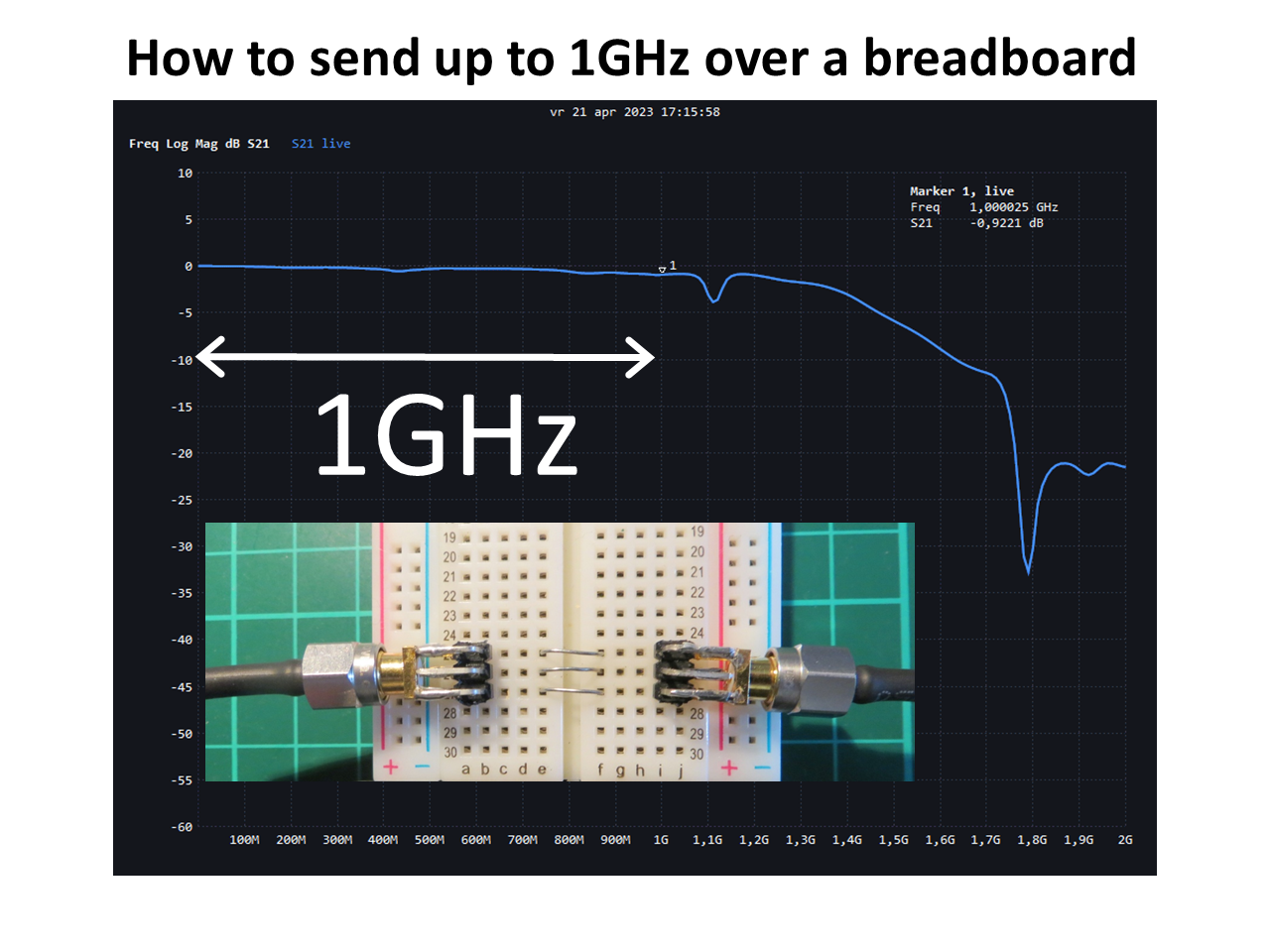
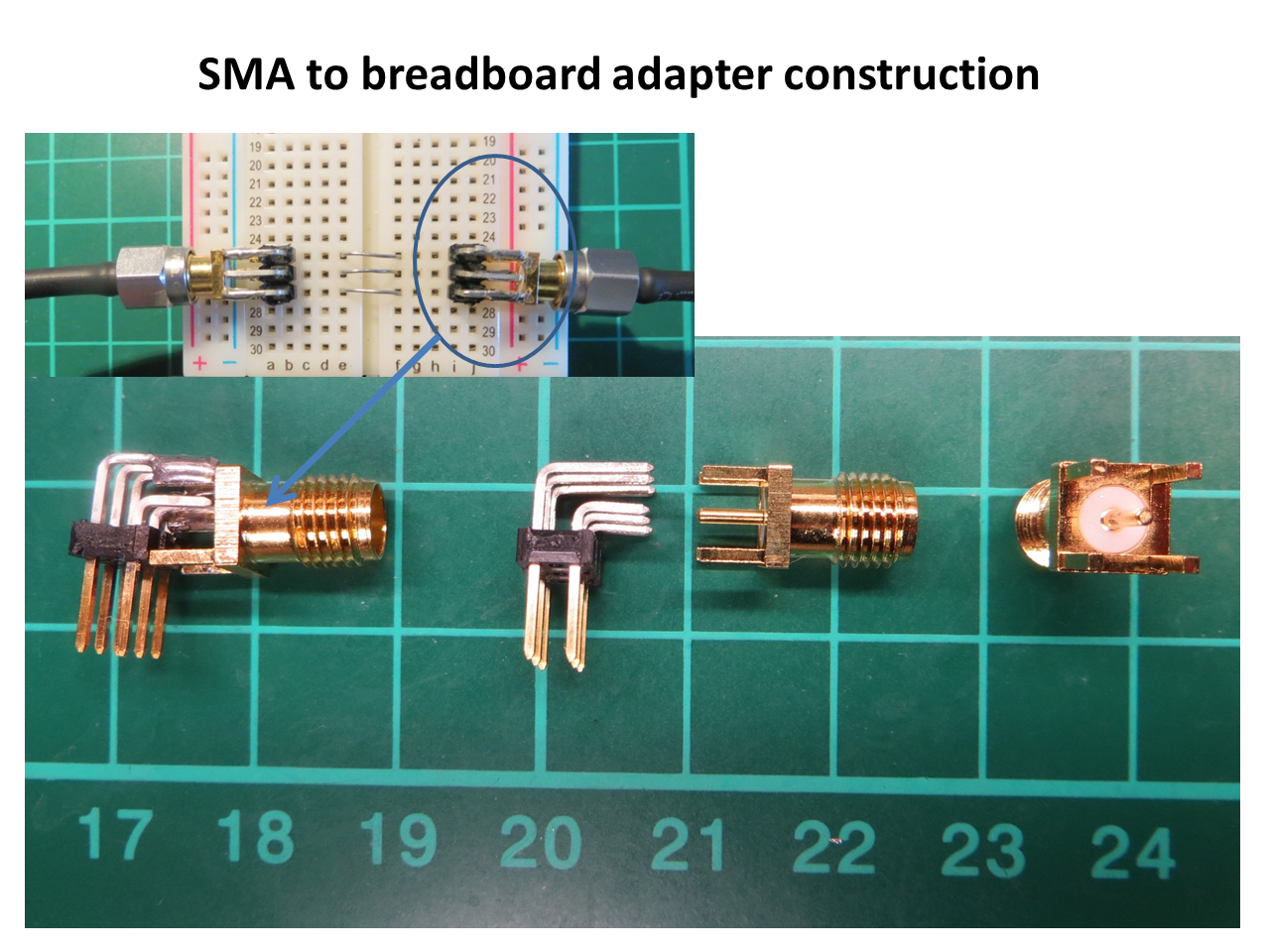
The concept of getting a proper RF transmission over the breadboard is based on creating a so-called coplanar transmission line, this does not need a groundplane underneath. Basically you run the centre conductor with an adjacent ground line on each side of it. A look at a breadboard layout reveals that this is possible using in total 3 neighbouring contact strips. A test showed that you can even "jump over" with 3 wire bridges to strips at the other side of the board while maintaining a transmission that is flat without 1dB up to 1GHz.
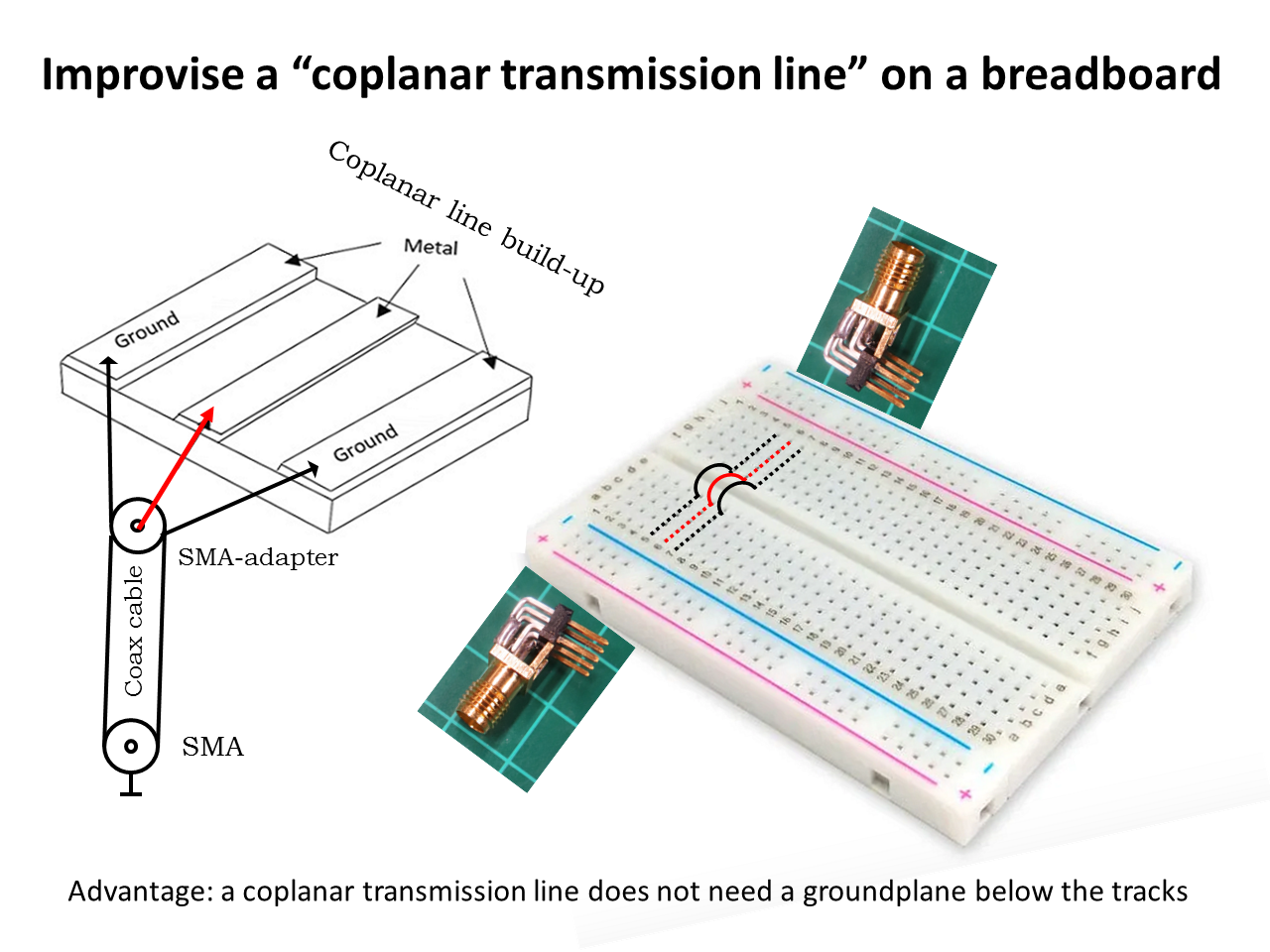
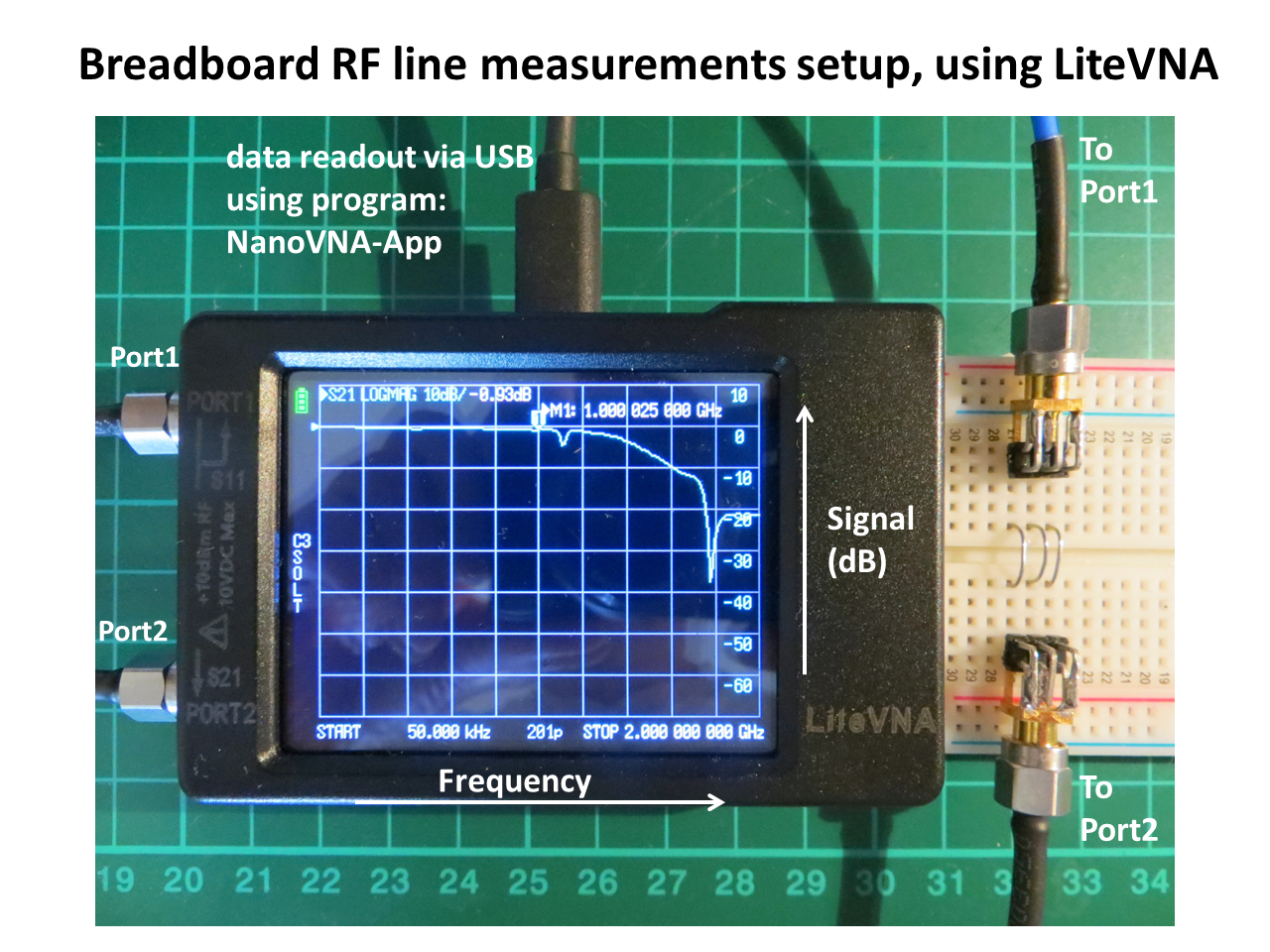
Some measured values using the adapters and wire bridges: Transmisson (named S21) is worst case only down with -0.9dB at 1GHz, even better at other frequencies. This means you loose a very small amount of power in sending a signal over. Reflection (named S11) is highest -12dB at 1GHz and below -16dB at other frequencies. Crosstalk with central wire bridge removed (S21 again) is worst case -21dB when approaching 1GHz and -40dB at 500MHz
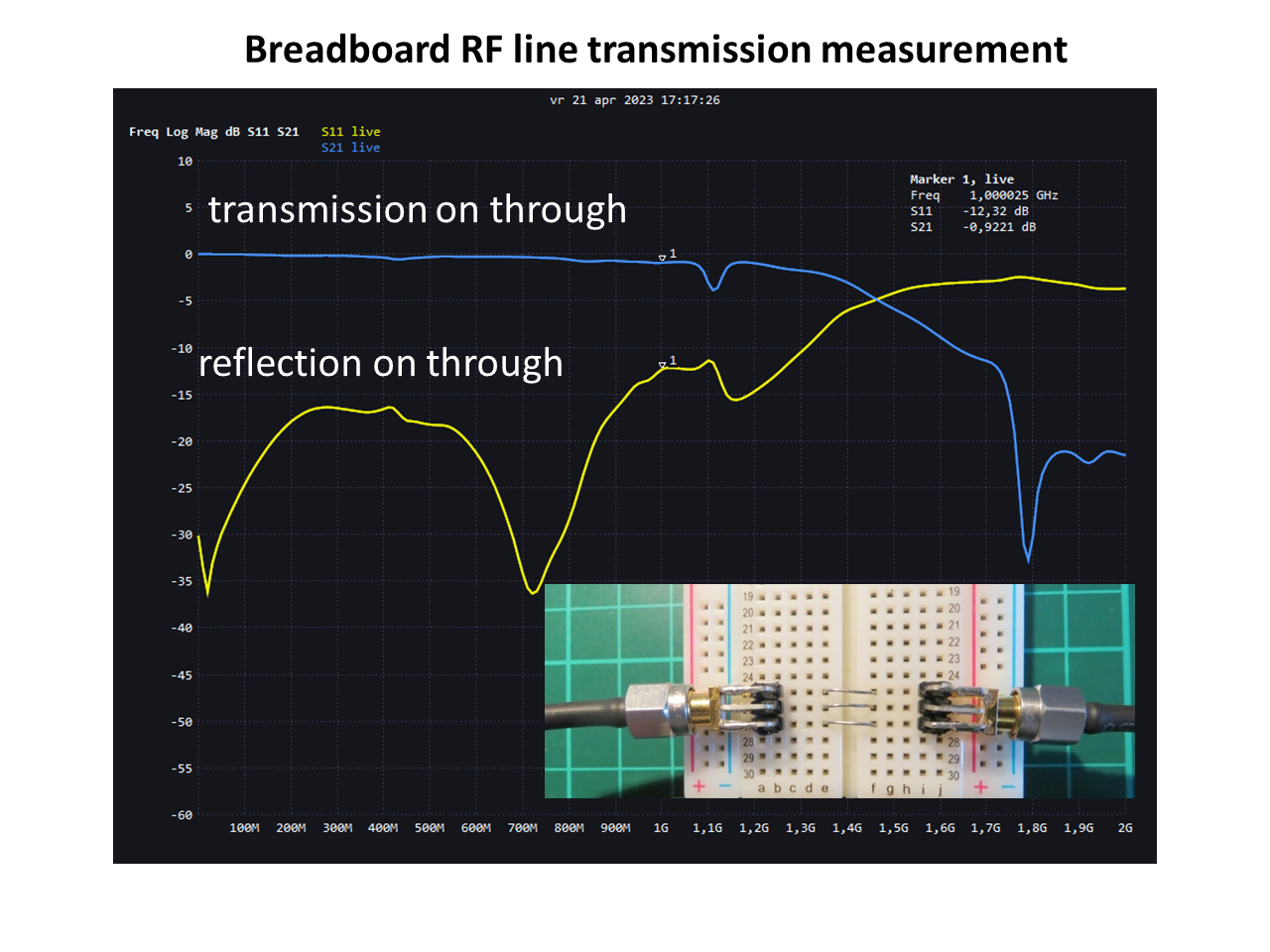
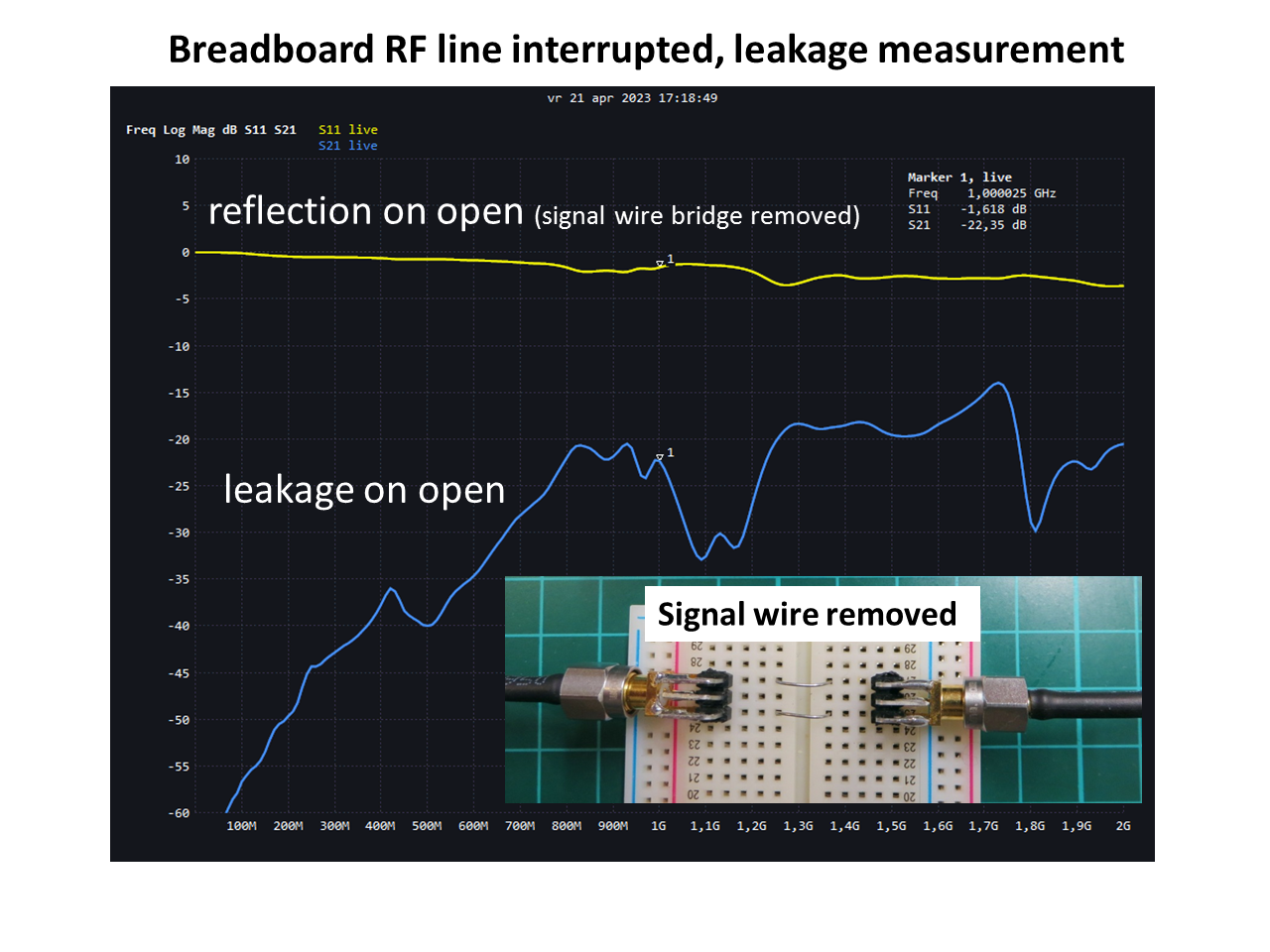
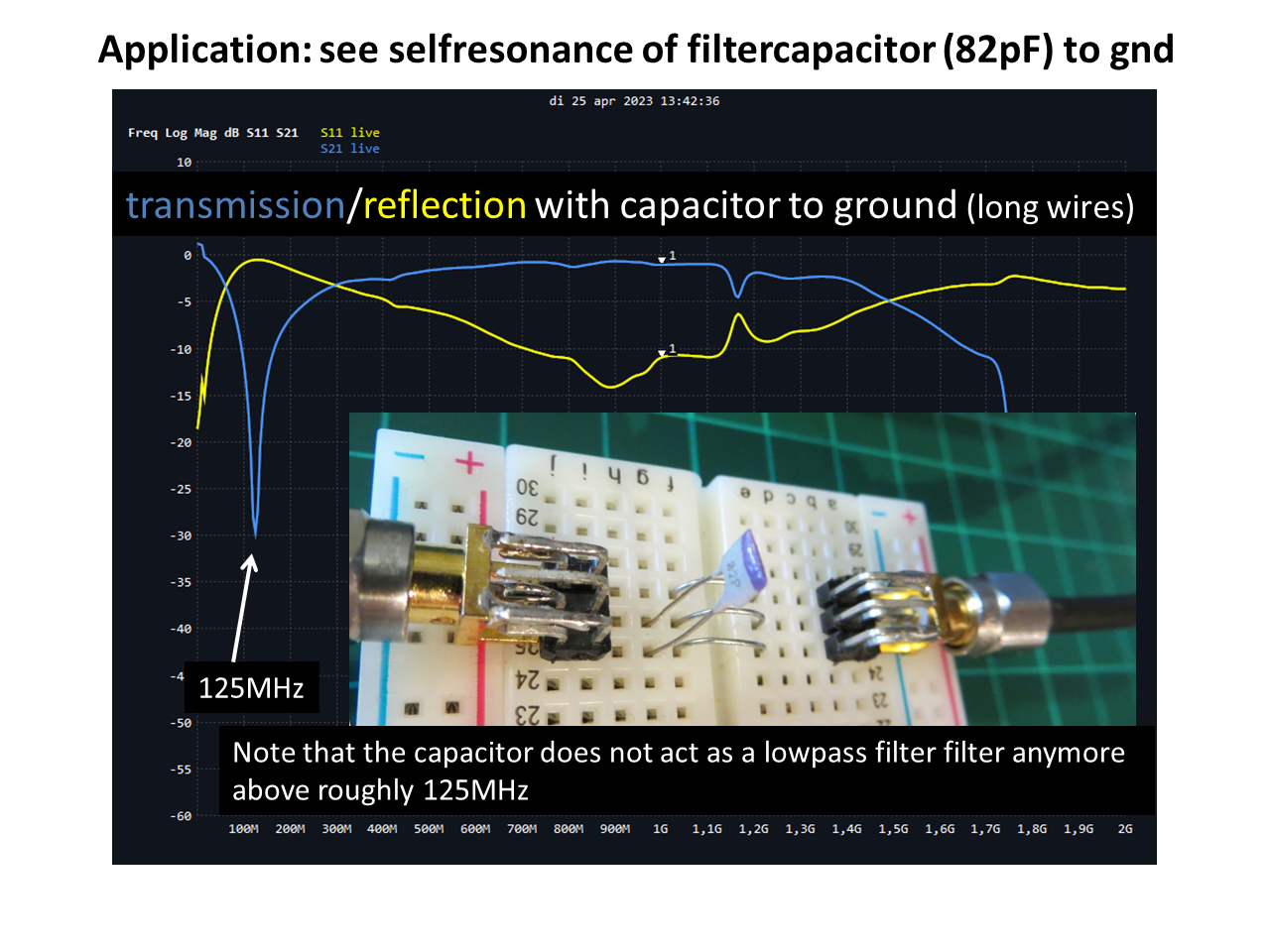
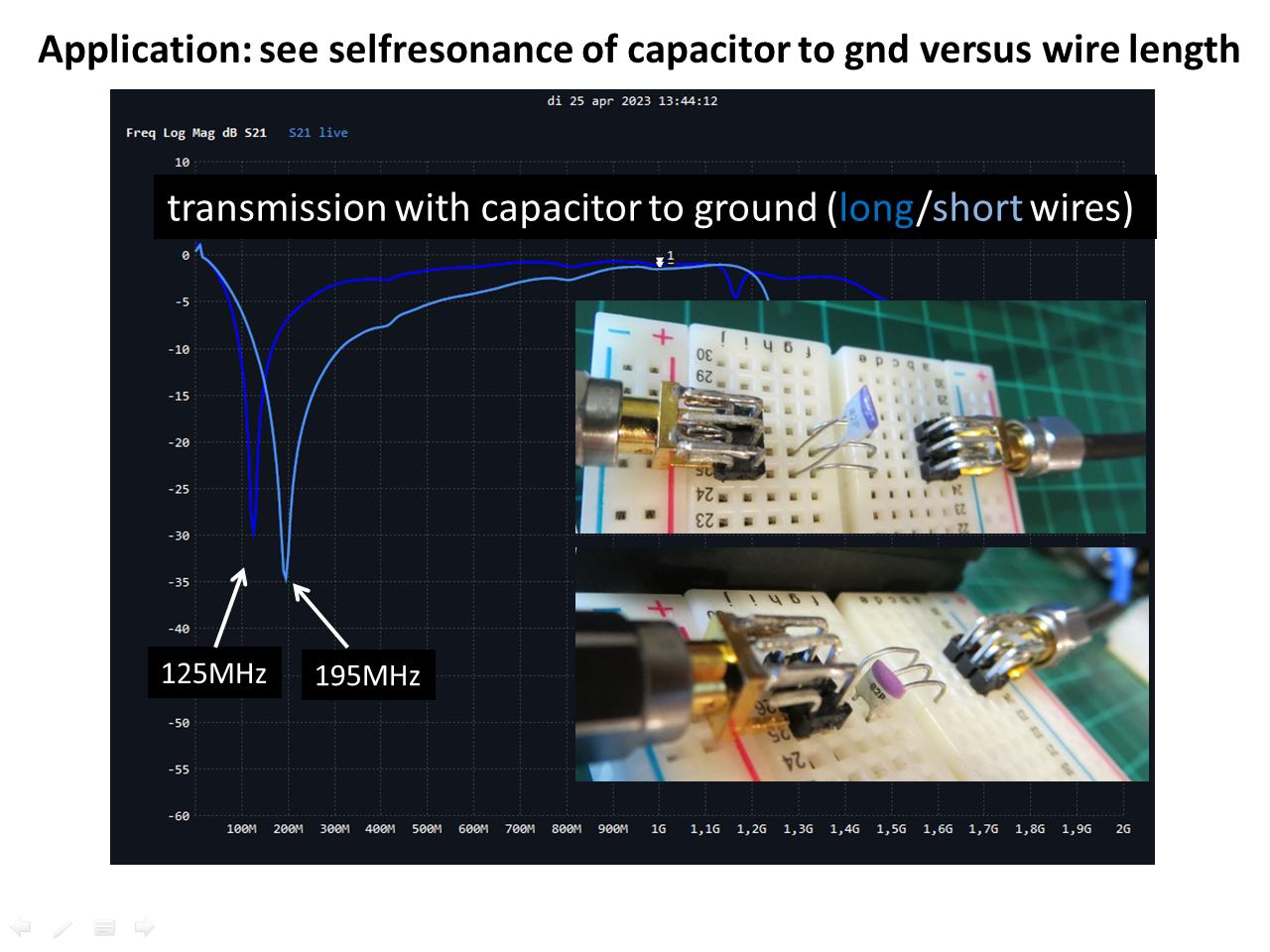
Basics of the equipment used here:
This unit is called a VNA, a Vector Network Analyzer, capable of measuring RF transmission and reflection. This one has two signal connectors , these are called "ports" in VNA language. Port 1 can both send and receive a signal, Port 2 can only receive a signal. The unit measures both the signal magnitude and the phase (that is what the "Vector" stands for) of the signals on these ports. It measure from 50kHz up to maximum 6.3GHz.
With a VNA you can measure RF-transmission, named S21, meaning: what is port 2 receiving from port 1, and also RF-reflection, named S11, meaning: what is port 1 getting back from it's own send signal. Much more is possible but here we restrict it to these two measurements. In the uploaded document several applications are shown.
Some info on the specific VNA used here:
Up to some years ago you could only buy professional VNA's at prices above 10k Euro. Some clever HAM radio amateurs developped a small unit with a bit restricted specs but enough for most applications. These models are called NANO-VNA and Lite-VNA (used here) and start at prices around 100 Euro. The units are very small but come with free software to operate and read them from a PC.
For the Pro's:
One could argue that the bridged distance is relative short compared to the wavelength of 1GHz to have the proposed structure effectively operating as a transmission line. It is however longer than 0.1 wavelength (the usual rule of thumb number limit) and approaching the quarter wavelength where large resonances could occur on a mismatch. The 3-wire coplanar structure also confines the signal and cannot be replaced by simply 2 wires of the same length as is shown in the measurements. For these reasons I tend to call this structure a (quite short) transmission line.